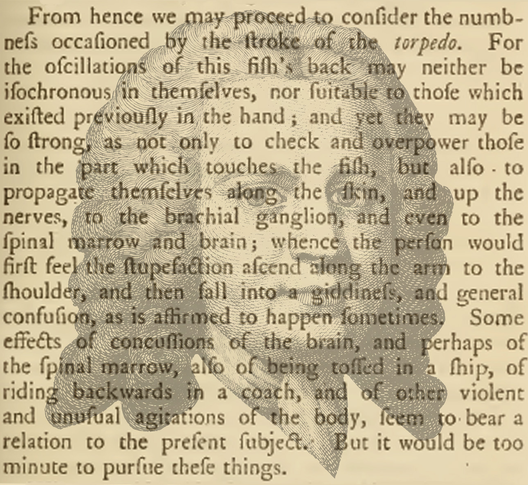David Hartley1705–1757
Hartley sought to unite the physical and psychological worlds by means of a speculative neurophysiology. His sources of inspiration were Newton’s theory of vibrations, Locke’s principle of association, and a host of perceptual phenomena. He also drew heavily on Berkeley’s sensory-motor theory of vision. In his Observations on Man, his Frame, his Duty, and his Expectations, published in 1749, Hartley proposed that sensations enter into the nervous system as vibrations (matter in motion) which give rise to localised vibrations in the brain: “External Objects impressed upon the Senses occasion, first in the Nerves on which they are impressed, and then in the Brain, Vibrations of the small, and, as one may say, infinitesimal, medullary Particles”. He assumed that memory images could be conceived as smaller scale vibrations (vibratiuncles) in the same regions of the brain as the original sensory experience. Since these vibrations can become associated by contiguity, they can link up to represent compound ideas and, in this manner, they can act as a material basis for the stream of consciousness. It was vital for his theory that these vibrations could persist after the external object had been removed, so that they could function as the physical substrate for our ideas. Hartley founded his theory on the phenomenon of visual persistence but the ideas of vibrations in the nerves did not themselves persist. The concept was important because it reflected a change in the view of nerve function from the flow of the animal spirit through hollow tubes to mechanical vibrations within solid nerves. Interest in the electrical properties of torpedo fish was growing in Hartley’s day, and he mentioned the numbness produced by touching them. He is shown in his text describing the effects of the shock. It a pity that he thought “it would be too minute to pursue these things” because others, like Walsh, were to pursue them and the possibility of electrical action within the nerves was given added support.
